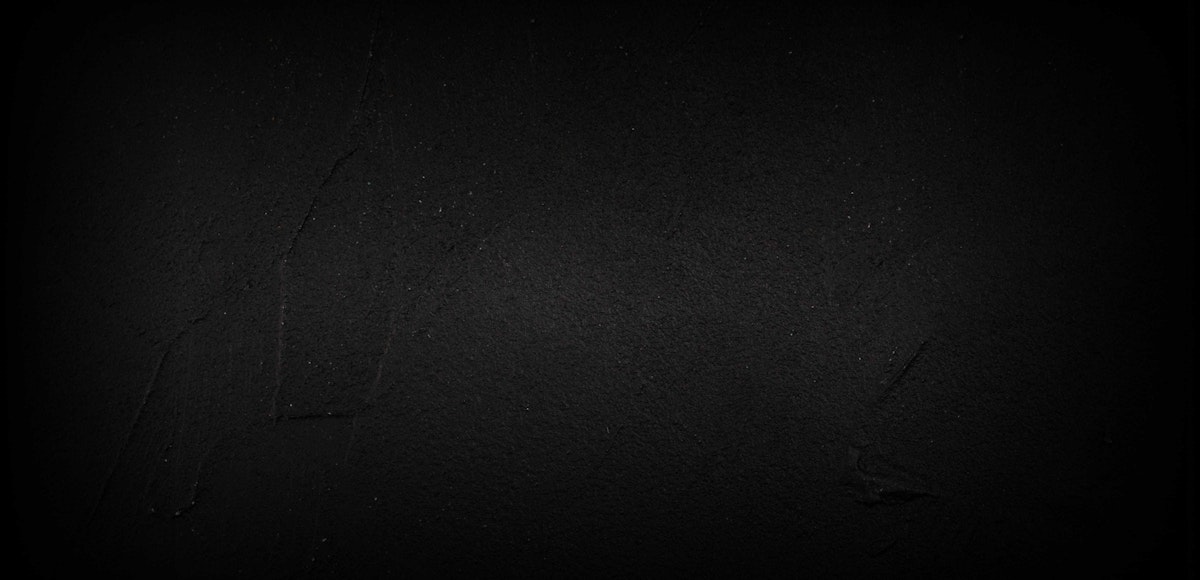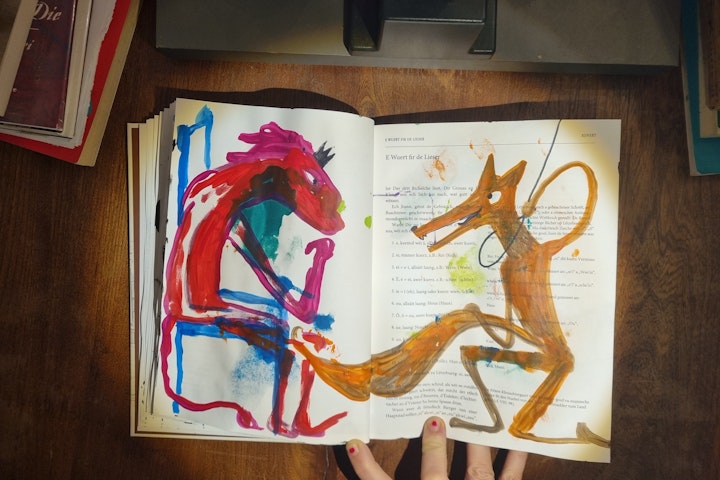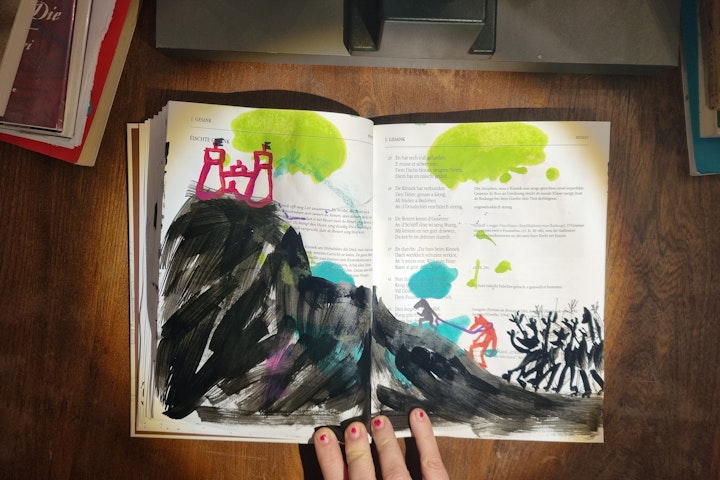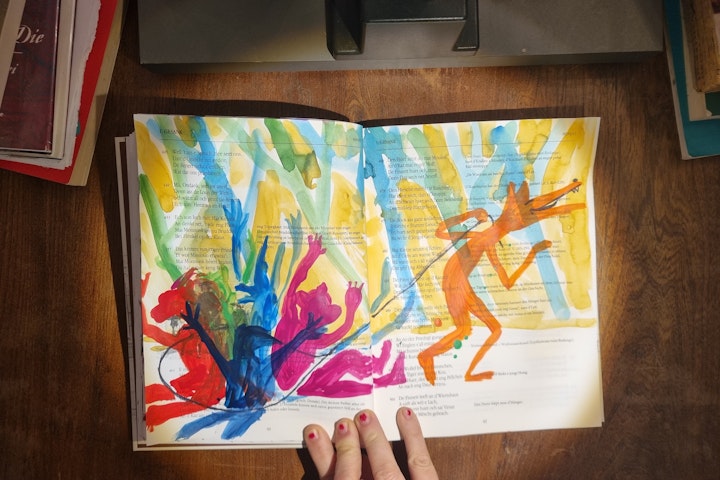From 21 January to 12 February, visitors to the Flip off exhibition will be able to scroll through images created by some fifteen illustrators and graphic designers from Luxembourg and beyond. Among these is Marie Paccou whom Rotondes asked to transform an edition of the Luxembourg classic Renert.

Flip off Marie Paccou
Marie, how dare you draw in books?!
I take that liberty because I like the result so much! It all began when I got an invitation to facilitate a flipbook workshop in a library. The slightly transgressive side of writing and drawing in books in such a place really appealed to me. The ways books are used and accessed are changing; young people engage in culture using other media, and many libraries have books they are getting rid of.
Have you read all the books you use?
In the beginning, I only drew in books I was certain I wouldn’t want to read again. Normally, I never make a flipbook immediately after having read a book, because it takes time to process what you want to keep. So, when I do start drawing, I no longer have a vivid or detailed memory of the book’s content.
I haven’t actually read Renert – which I am illustrating for the exhibition – because I can’t read Luxembourgish. But I did read a lot about the story, and I read Roman de Renart (aka Reynard the Fox). I sometimes feel like I am portraying a book, and that is exactly what happened with Renert.
What did you keep in your version?
In the Roman de Renart, Renart is sentenced to death but manages to charm and trick the king and regain his freedom. I have kept the animal metaphor in my Renert. The colour orange gave me a certain amount of liberty when drawing because it already points to the fox. I also used an object, a rope, as a guiding thread. At the end, Renert imprisons the king and his court, and runs away leaving all the noble folks entangled in the rope behind him. That part isn’t really in the story, but it was my way of condensing what happens in Roman de Renart. It’s more a summary of Renert’s character than of the book itself. (below: research drawings for Renert)
Did the layout of the book influence your drawing?
I started the series by working on books that didn’t have any illustrations but only text. It was easier because what I drew stood out straight away. It was quite new and interesting to me that this book already has a lot of illustrations. As the images change from one page to the next and the pages of the book are filmed at 12 frames per second, it’s already quite strong graphically.
All these printed pages, engravings, and photographs create a kind of “noise” that is hard to ignore. So, I used colour to distinguish myself from the black and white medium. And I worked with a brush so that you could see the animation despite all the engravings and text in the background.
Once the line is on the page, there is no turning back. How do you manage that?
When an engraver works with a gouge on a wooden plate and removes a piece, he can’t put it back. I feel like it’s the same for me. It’s complicated because there are lots of times when I draw and I’m not satisfied with what I’ve done, but I must move on. I’ve worked in short films with digital tools and it’s hard to work knowing you can change everything later too.
I worked on a film on After Effects with a team, and sure, we had lots of layers and bits and pieces, but at the end there weren’t really any all-compassing traces of the film. Whereas when you work in a traditional manner, there are no layers, no special effects, no filters. Everything you see in the video is present in the object, which makes the original as interesting to watch as the film.
Your books are special because people mainly know them from the film version. They aren’t really meant to be ‘thumbed’ through.
It’s a bit like the ordeal of Tantalus because a book is normally meant to be handled. But books are also cherished objects because they are unique. My books raise the question of the speed at which my drawings are viewed. When I made films, the drawings were just the ‘leftovers’ of a job, which aimed to create projection and light. When you make animated drawings, you hurry, you scurry, you make one image after another and there’s no time to be satisfied with one image before moving on to the next one. Now that I’m doing exhibitions, I also show still animation, or parts of an animation. I feel like it’s a way of somehow slowing things down.
Could you share an image that has left an impression on you and say why?
The film L’homme qui plantait des arbres (The Man Who Planted Trees) by Frédéric Back. I was really impacted by the transitions in this film. The editing is very fluid and there’s a kind of metamorphosis, a morphing from one shot to another. I also really liked Caroline Leaf’s film La rue (The Street) for the same reason. You don’t go abruptly from one space to another, there is a movement between the shots, everything is connected and fluid. So, I remember the transitions more than the images: they are like music.







